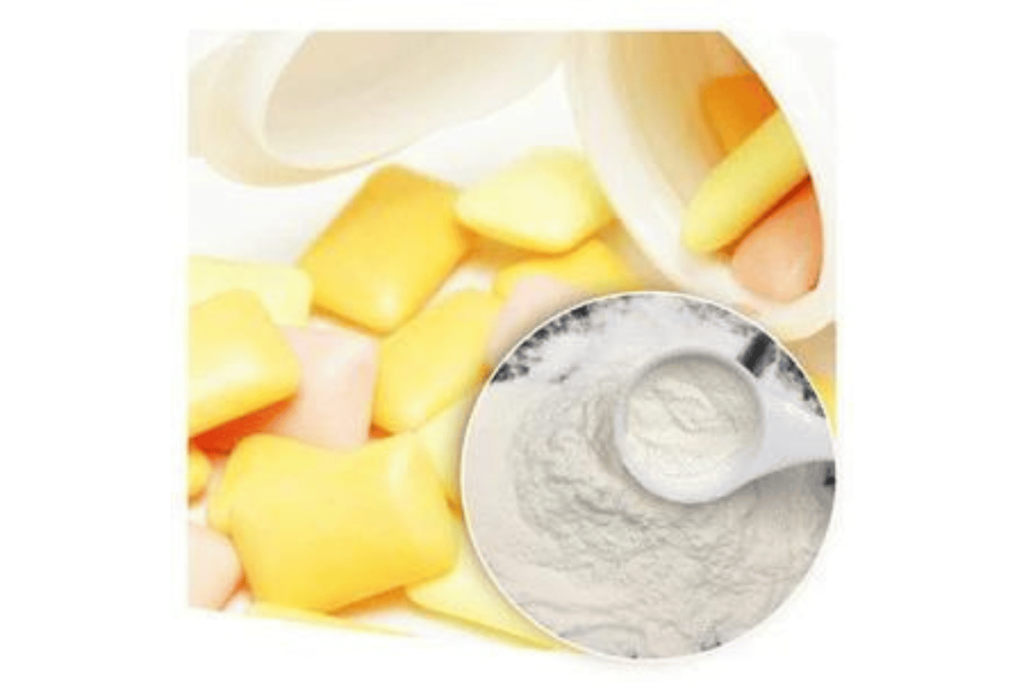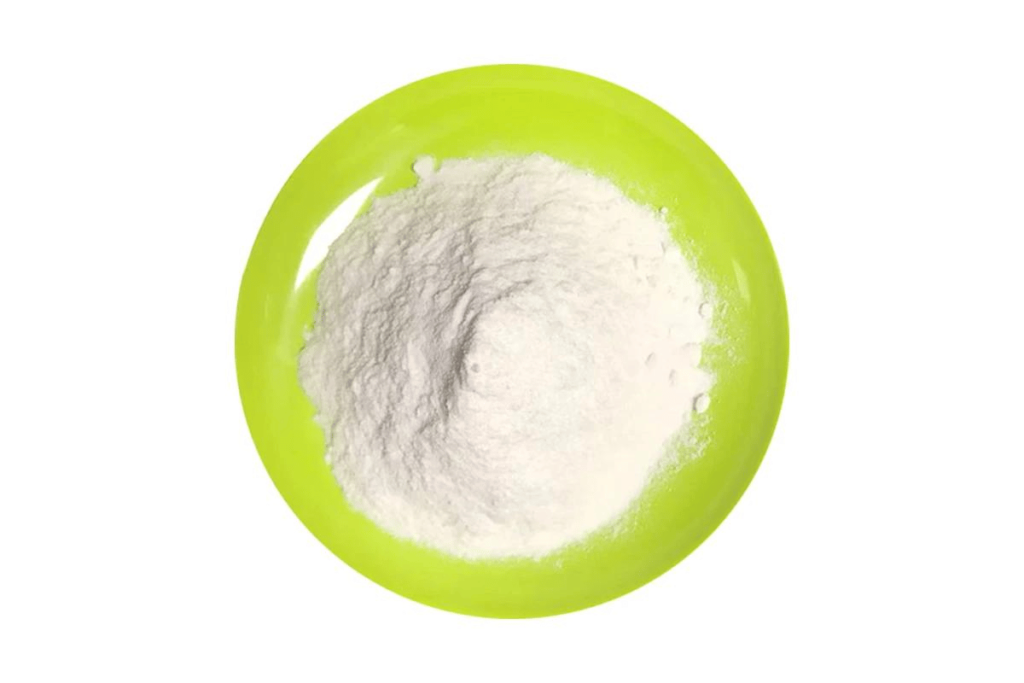Carboxymethyl cellulose (CMC), also known as sodium carboxymethyl cellulose, is a prevalent ingredient in various dietary products. This compound, a derivative of cellulose, has gained significant traction in the food industry due to its unique properties. CMC is not just a random chemical additive; it’s a substance that has transformed the way we consume and enjoy our food.
The journey of CMC food additive in the culinary world began in the early 20th century. Initially, its role was limited, but with advancing technology and better understanding, CMC’s applications expanded exponentially. The historical context of CMC’s usage reveals a shift from a simple thickening agent to a multifaceted component enhancing food texture, stability, and shelf life.
One of the most intriguing aspects of CMC is its ability to modify the texture of food products. Whether it’s in ice creams, baked goods, or sauces, CMC acts as a stabilizer and thickener, ensuring consistency and quality. This feature is particularly crucial in dietary products, where maintaining the desired texture without compromising on health is essential.
Moreover, CMC plays a pivotal role in extending the shelf-life of dietary products. By preventing the separation of ingredients and reducing spoilage, it ensures that food remains safe and palatable for longer periods. This characteristic is particularly beneficial in the current era, where the demand for long-lasting dietary products is on the rise.
In terms of nutritional aspects, CMC is a non-caloric fiber. This makes it a valuable addition to dietary products aimed at weight management and calorie control. It’s crucial to note that while CMC itself doesn’t add nutritional value, it aids in creating healthier versions of traditional foods without sacrificing texture or taste.
The introduction of CMC in the food industry is a testament to the evolving nature of food science. As we explore further into this topic, we will delve into the benefits, health and safety aspects, and the overall impact of carboxymethyl cellulose in our diets, emphasizing its role in modern dietary choices.

Understanding the Benefits of CMC in Dietary Products
Role of Carboxymethyl Cellulose in Enhancing Texture and Stability of Food Items
One of the primary benefits of Carboxymethyl Cellulose (CMC) in dietary products is its role in enhancing the texture and stability of food items. CMC is a versatile thickening agent, which means it can significantly improve the mouthfeel and consistency of various food products. For instance, in dairy products like yogurt and ice cream, CMC helps maintain a creamy and smooth texture, which is essential for consumer satisfaction.
Moreover, CMC is highly effective in stabilizing emulsions and suspensions, which is crucial in products like salad dressings and sauces. This stabilization prevents the separation of oil and water phases, ensuring a uniform and appealing product. In baked goods, CMC contributes to moisture retention, leading to softer and fresher-tasting products over an extended period.
Contribution of Carboxymethyl Cellulose to the Shelf-life of Dietary Products
Another key advantage of CMC food additive is its contribution to extending the shelf-life of dietary products. CMC’s ability to bind water reduces the risk of microbial growth, which is a common cause of spoilage in food products. This property is particularly beneficial in products that are prone to drying out or losing their texture over time, such as baked goods and snacks.
The extended shelf-life provided by CMC is not only convenient for consumers but also reduces food waste. With longer-lasting products, there’s a decreased likelihood of discarding food due to spoilage, which is an important consideration in today’s environmentally conscious society.
Nutritional Aspects of Carboxymethyl Cellulose: Caloric Content and Dietary Considerations
From a nutritional standpoint, CMC is an appealing option for those looking to manage their calorie intake. Being a non-caloric fiber, it does not contribute to the total calorie count of the food product. This feature is particularly beneficial in low-calorie and dietetic foods, where maintaining the desired taste and texture without adding extra calories is essential.
Furthermore, as a fiber, CMC can aid in digestive health. While it doesn’t provide the same benefits as dietary fiber found in whole foods, its presence in processed foods can contribute to the overall fiber content of a diet. This aspect is especially relevant for individuals who struggle to consume adequate amounts of fiber through their regular diet.
In summary, the use of Carboxymethyl Cellulose in dietary products offers multiple benefits, ranging from improved texture and stability to extended shelf life and favorable nutritional content. As we continue to explore CMC’s role in the food industry, its contribution to enhancing the quality and healthiness of dietary products becomes increasingly evident.
Health and Safety Aspects of Carboxymethyl Cellulose Consumption
Analysis of FDA Regulations and Guidelines on Carboxymethyl Cellulose
The safety and regulatory status of Carboxymethyl Cellulose (CMC) is a crucial aspect for consumers and manufacturers. In the United States, CMC is recognized as safe by the Food and Drug Administration (FDA). The FDA classifies CMC as a “Generally Recognized as Safe” (GRAS) substance when used in accordance with good manufacturing practices. This designation implies that CMC has been shown to be safe for consumption under its intended use in food products.
The FDA’s guidelines stipulate permissible levels of CMC in various food categories, ensuring that its use does not pose health risks to consumers. Manufacturers must comply with these regulations, which are based on extensive scientific research and safety assessments. This regulatory oversight provides assurance that dietary products containing CMC meet strict safety standards.
Scientific Research on the Health Effects of Carboxymethyl Cellulose Consumption
Scientific research plays a pivotal role in establishing the safety profile of food additives like CMC. Studies have investigated the potential effects of CMC consumption on human health, focusing on aspects such as digestion, absorption, and metabolism. The consensus from these studies is that CMC, when consumed within recommended limits, does not pose significant health risks.
Research has shown that CMC is not absorbed by the body and passes through the digestive system largely unchanged. This characteristic minimizes the risk of toxicity or adverse metabolic effects. Additionally, studies have not found evidence linking moderate CMC consumption to serious health concerns, supporting its continued use in the food industry.
Addressing Common Misconceptions and Concerns about Carboxymethyl Cellulose
Despite its established safety profile, there are common misconceptions and concerns about the consumption of CMC. Some consumers worry about the presence of chemicals in their food, associating additives like CMC with potential health risks. However, it’s important to understand that the safety of food additives is rigorously evaluated before approval and continuous monitoring ensures their ongoing safety.
Another concern relates to the digestive effects of CMC. While it’s true that excessive consumption of any additive can lead to digestive discomfort, normal levels of CMC in food products are unlikely to cause such issues. The key is moderation and adhering to a balanced diet, where CMC and other additives play a small, regulated role.
In conclusion, the health and safety aspects of CMC consumption are well-regulated and backed by scientific research. Understanding these aspects helps dispel unwarranted concerns and allows consumers to make informed decisions about the dietary products they consume. As we explore further, it becomes clear that CMC is a safe and valuable component in modern food production.

Carboxymethyl Cellulose in Special Diets and Allergy Considerations
Suitability of Carboxymethyl Cellulose for Vegetarian, Vegan, and Gluten-Free Diets
Carboxymethyl Cellulose (CMC) is particularly notable for its compatibility with various special diets, including vegetarian, vegan, and gluten-free lifestyles. As a chemically modified derivative of cellulose, which is a natural fiber found in plants, CMC is entirely plant-based. This makes it a suitable additive for vegetarian and vegan diets, where animal-derived ingredients are avoided.
For individuals following a gluten-free diet, CMC presents a valuable option. Since it is derived from cellulose and not from wheat or any other gluten-containing grains, it is inherently gluten-free. This property is especially important in the production of gluten-free baked goods, where CMC can provide the desired texture and consistency that might otherwise be lacking due to the absence of gluten.
Discussion of Allergenic Potential and Hypersensitivity Issues Related to Carboxymethyl Cellulose
When it comes to allergenic potential, CMC is generally considered safe and non-allergenic. Unlike some food additives that can trigger allergic reactions or hypersensitivity in sensitive individuals, CMC has not been commonly associated with such issues. This is partly due to its chemical structure and the way it interacts with the human body – mainly passing through the digestive system without being absorbed.
However, as with any food additive, there is always a possibility, albeit small, of hypersensitivity or an adverse reaction in some individuals. People with a history of severe food allergies or specific sensitivities should always be cautious when trying new food products, including those containing CMC. If any adverse reactions are observed, it is crucial to consult a healthcare professional.
It’s also worth noting that the purity of CMC can play a role in its allergenic potential. Impurities or cross-contamination during manufacturing can introduce allergens into the product. Therefore, it’s important for manufacturers to adhere to strict quality control procedures to ensure the safety and purity of CMC and other food additives.
In summary, Carboxymethyl Cellulose is a versatile food additive that aligns well with various special dietary needs and is generally free from allergenic concerns. Its plant-based origin and gluten-free nature make it suitable for a wide range of dietary preferences, contributing to its widespread use in the food industry.

Comparing Carboxymethyl Cellulose with Other Food Additives
Contrast Between Carboxymethyl Cellulose and Other Common Food Additives in Terms of Functionality and Health Impact
Carboxymethyl Cellulose (CMC), due to its unique properties, stands out among various food additives. When compared to other common additives, CMC offers distinct advantages in terms of functionality and health impact. For instance, unlike some synthetic thickeners and stabilizers, CMC is derived from natural cellulose, making it a more favorable choice for consumers seeking ‘cleaner’ food labels.
In terms of functionality, CMC provides excellent stability and texture enhancement, often outperforming other additives like gelatin or agar-agar. This is particularly evident in vegan and vegetarian products, where CMC serves as an ideal alternative to animal-based thickeners. Additionally, its ability to withstand a wide range of temperatures and pH levels makes it more versatile in various culinary applications compared to other additives.
From a health perspective, CMC has a neutral caloric value, which is advantageous over sugar-based thickeners that can add unnecessary calories to the diet. It’s also non-allergenic, setting it apart from additives like gluten or soy derivatives, which can cause allergic reactions in sensitive individuals.
Case Studies Highlighting the Advantages of Carboxymethyl Cellulose Over Alternatives
Several case studies in the food industry illustrate the advantages of CMC over other additives. For example, in gluten-free baking, CMC has been successfully used to mimic the texture and structure that gluten provides in traditional baked goods. This application not only caters to those with gluten intolerance but also enhances the overall quality of gluten-free products.
Another case study involves the use of CMC in dairy and dairy-alternative products. Here, CMC effectively maintains the creamy texture and prevents separation, a common challenge in non-dairy milk alternatives. This application demonstrates CMC’s superiority in creating products that align with the evolving dietary trends and preferences.
In summary, the comparison of Carboxymethyl Cellulose with other food additives reveals its superior functionality and better health profile. These advantages, highlighted through various case studies, showcase CMC’s pivotal role in modern food processing and its alignment with consumer demands for healthier, more natural food products.
Future Trends and Innovations in Carboxymethyl Cellulose Usage
Emerging Trends in the Use of Carboxymethyl Cellulose in Dietary Products
The future of Carboxymethyl Cellulose (CMC) in dietary products is marked by exciting trends and innovations. As the global food industry evolves, CMC continues to play a crucial role, adapting to new dietary preferences and technological advancements. One emerging trend is the increasing demand for clean label products, where consumers prefer ingredients that are natural, organic, and minimally processed. CMC, derived from natural cellulose, fits well within this paradigm, offering food manufacturers a versatile and consumer-friendly additive.
Another trend is the development of specialized dietary products, such as plant-based and allergen-free alternatives. In these areas, CMC’s functionality as a thickener and stabilizer is invaluable, especially in creating textures and consistencies similar to traditional food products. Its use in vegan and gluten-free products, for example, demonstrates its adaptability to different dietary needs and preferences.
Potential Innovations and Future Applications of Carboxymethyl Cellulose in the Food Industry
Innovation in the application of CMC is a key driver for its future use in the food industry. One area of potential is in the development of new forms or blends of CMC that offer improved or specialized functionalities. For instance, modifications to the molecular structure of CMC could lead to variants with enhanced solubility or gelling properties, opening up new possibilities in food processing and product development.
Furthermore, the integration of CMC with emerging food technologies, such as 3D food printing, presents exciting opportunities. CMC’s properties make it an ideal ingredient for creating stable and precise structures in 3D printed food, which is a growing area of interest for personalized nutrition and novel food experiences.
Another innovation frontier is the exploration of CMC’s potential health benefits. While traditionally valued for its functional properties, ongoing research might reveal additional health-related advantages of CMC, such as prebiotic effects or contributions to gut health. Such findings could significantly enhance the appeal of CMC as a functional food ingredient.
In conclusion, the future trends and innovations in CMC usage paint a promising picture. Its versatility, adaptability to clean label trends, and potential for innovation position Carboxymethyl Cellulose as a key ingredient in the ongoing evolution of the food industry. As research and technology advance, CMC is likely to play an even more significant role in meeting the dynamic needs and preferences of consumers worldwide.

The exploration of Carboxymethyl Cellulose (CMC) in dietary products has revealed a multitude of benefits that this versatile additive offers. CMC stands out for its ability to enhance the texture and stability of food products, making it an invaluable tool in the food industry. Its role in extending the shelf life of products and maintaining consistency across various temperature and pH ranges highlights its functional importance.
Moreover, the health and safety aspects of CMC have been thoroughly evaluated, reassuring consumers about its inclusion in their diets. Its compatibility with special diets, such as vegetarian, vegan, and gluten-free, and its non-allergenic nature further broaden its applicability in diverse dietary preferences.
The discussion on CMC underscores the importance of making informed choices regarding food additives. Understanding the role, benefits, and safety of additives like CMC allows consumers and manufacturers to make decisions that align with health, dietary needs, and preferences. As the food industry continues to evolve, ingredients like CMC will play a critical role in balancing nutritional value, safety, and sensory qualities of food products.
In conclusion, Carboxymethyl Cellulose represents more than just a food additive; it is a testament to the advancements in food science and technology, offering solutions to many modern dietary challenges. Its ongoing use and potential future applications suggest a continued positive impact on the quality and variety of food products available to consumers.





